The undergroud mycelium can be enormous and ancient. Some have been found to be thousands of years old and thousands of acres in size. In my own yard, one variety or another pops up periodically all over my lawn.
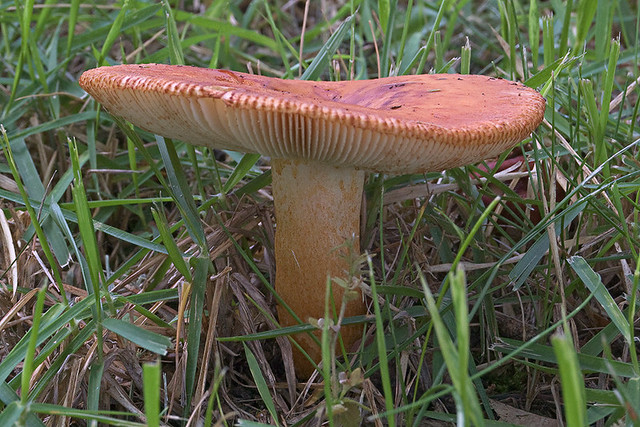
We lately have experienced a bumper crop of mushrooms — perhaps because of this year's greater-than-average rainfall. My career in mushroom photography started this spring: the mushroom above was on my front lawn, and as the summer and fall progressed, my camera was drawn to photographing each one that I found. Unfortunately, I never used my best technique when photographing these (not wanting to lug around extra equipment in the woods), so these are just casual snapshots.

Since I was a young child, I was fascinated with the stories my mother told me about her father, who was an expert at foraging for plants and mushrooms as well as other outdoor skills. I still remember being at my mother's knee, looking at drawings in a book, showing poisonous mushrooms that looked nearly identical to edible varieties. So I know nothing of mushrooms, other than to be extremely careful.
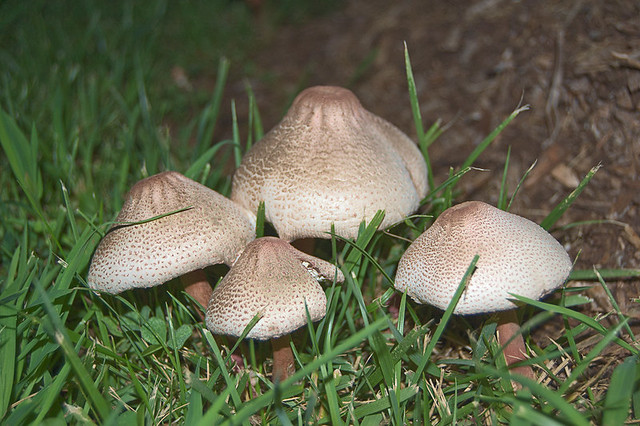
“The fear of the Lord is the beginning of wisdom,” wrote King Solomon, and fear of the natural world is likewise prudent, especially for young children who are wont to put everything into their mouth. A naïve understanding of the goodness of nature, like the goodness of God, is eminently dangerous. So perhaps it is prudent to inculcate first in children a fear of at least certain parts of nature and their inherent dangers: hereabouts the common dangers would include mushrooms, poison ivy, skunks, and snakes of the pit viper family.
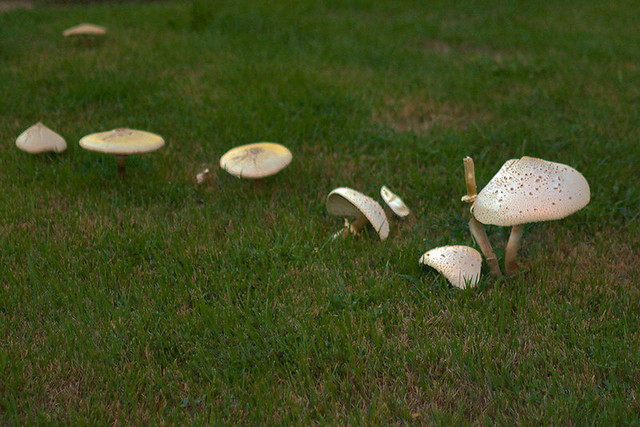
These are very large mushrooms, found at dusk in my neighborhood.
We do not rely on scientists to tell us which mushrooms are edible; rather we rely on the long handing-down of tradition, and it would be foolish to eat any plant or fungi that has no tradition of edibility. You can only feel pity for the people who started the traditions, likely thousands of years ago, who first discovered the edible foods, or rather who found out painfully which plants were not edible. One thing is rather certain: we can trace many of our food traditions to very specific places, and so many of our cultivated plants are native only to particular locales.
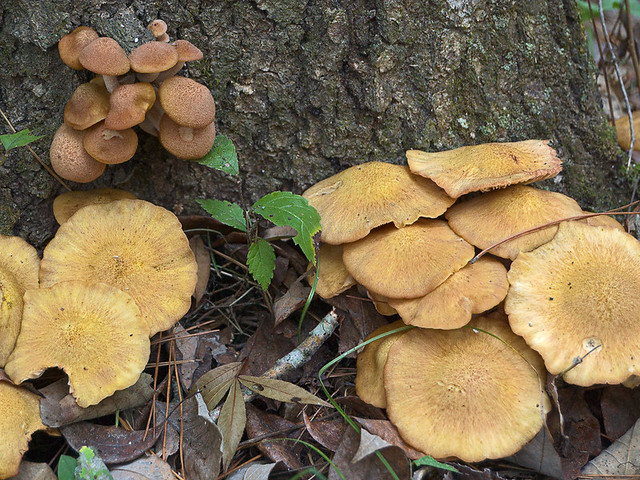
But what if you are lost or stranded in the wilderness, and your hunger grows greater by the hour? My father tells me of the advice found in the survival training of the military and Boy Scouts. First, I would see if something looks and smells like food; does it delight the senses? Now this can be perilous, but try eating just a small amount of it; if it tastes good and you have no reaction, and feel fine, then try a bit more at one time. If you don't get sick, then it might be edible. If animals, particularly mammals are eating it, then it might be OK — or not, if they are ruminants like deer, horses, or cattle who can digest foods that humans cannot. Rather it is better finding out which wilds foods are most definitely edible, and perhaps this is a lesson best learned by an older child.
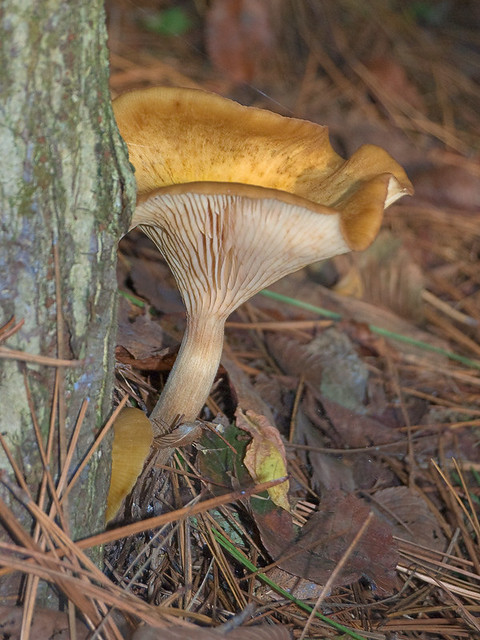
Many mushrooms can only be definitively identified at full, flourishing maturity; others require chemical tests, and there are many practical methods which only work in specific localities. While local guidebooks — I repeat, local guides designed for your specific area — are handy, I would not rely on them too much. It is always prudent to ask the advice of a local expert — however, don't expect these experts to tell you the locations of their favorite morel patches! Mushroom foraging is not the pursuit of the urban dilettante.
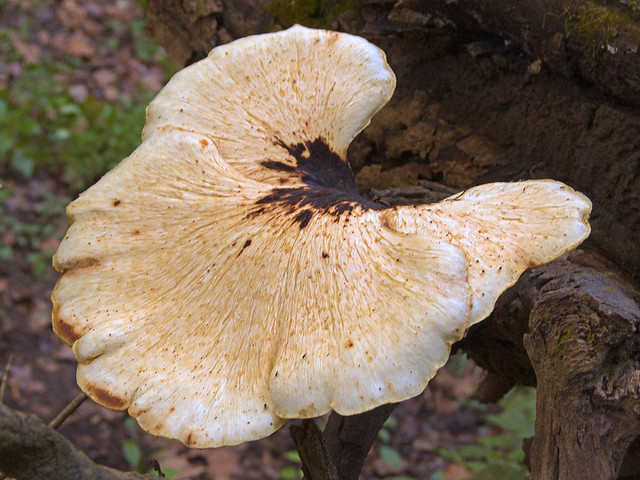
This is perhaps the largest mushroom I've ever seen. It was about a foot and a half across.
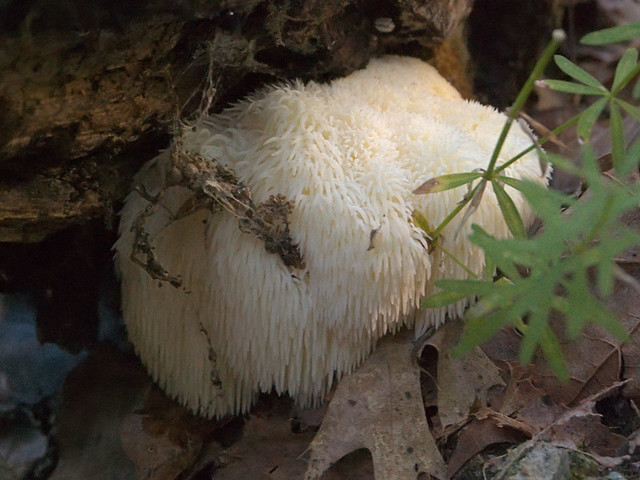
I was told this is a Lion's mane mushroom.

I have not been able to find any references to mushrooms in Sacred Scripture. Other fungi like blight and mildew are mentioned in the Holy Bible either as a plague on crops or a source of Old Testament ritual impurity. Yeast, also a fungus, has a number of references, it being a symbol of the Kingdom of Heaven, but it has a negative connotation also — see Matthew 16:11-12.
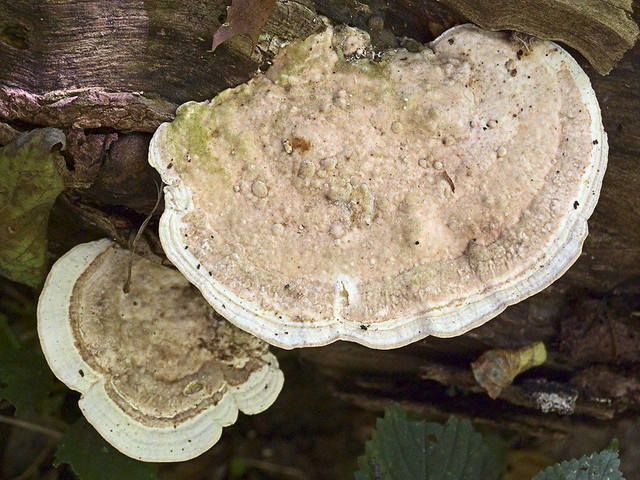
The Fathers and Doctors of the church mention mushrooms rarely. Anobius of Sicca thinks they are an excessively dainty food, while Saint Irenaeus compares heretics to mushrooms that spring up overnight. Likewise Saint Augustine thinks mushrooms are a dainty food — that is, a luxury food such as caviar is thought of today — and mentions their dangers. Saint Francis de Sales repeats the physicians' advice that mushrooms should be eaten sparingly, and notes that they often cause sickness.
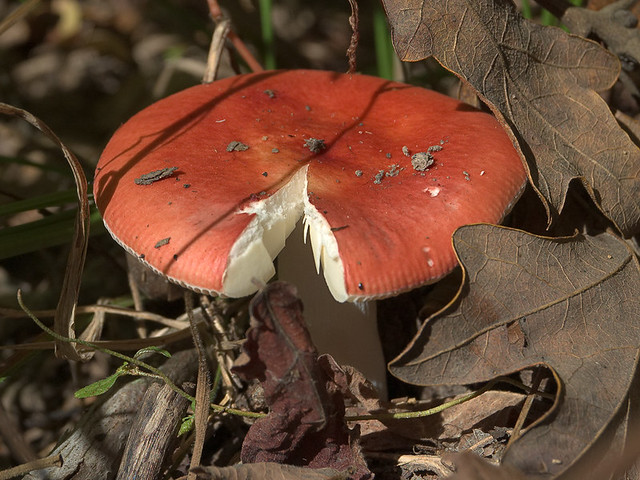
In the Orient, mushrooms symbolize many things, including fertility, immortality, and good government; in the West, the mushroom lacks nearly all symbolism except that of rapid growth. Even then, this rapid growth is not usually positive, mainly because the fruit of the mushroom is so often poisonous, and also because this growth is fleeting and soon to pass. Rather, those who analogize about mushrooms state that we must instead be patient and prudent: a grape vine or olive tree takes many years and much effort to cultivate, but the fruit of these are worth the wait.
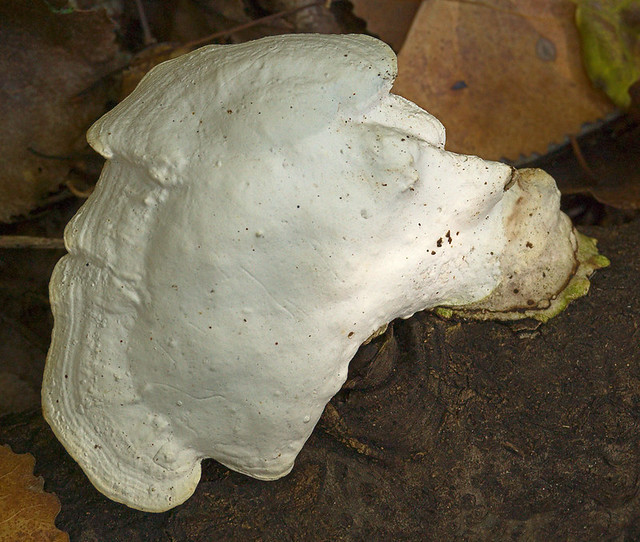
In nearly all these photographs, the mushrooms were found in deep shade of the dark forest, typically growing on fallen, rotted tree trunks.
I think I started taking these photos of mushrooms partly because they are larger than flowers — and so easier to get a good in-focus shot — and because they photograph so much better than general forest scenes. You might want to read an article I wrote on the disappointments of forest photography here. Also, because I think mushrooms are a curious and rare delight.
I think I started taking these photos of mushrooms partly because they are larger than flowers — and so easier to get a good in-focus shot — and because they photograph so much better than general forest scenes. You might want to read an article I wrote on the disappointments of forest photography here. Also, because I think mushrooms are a curious and rare delight.
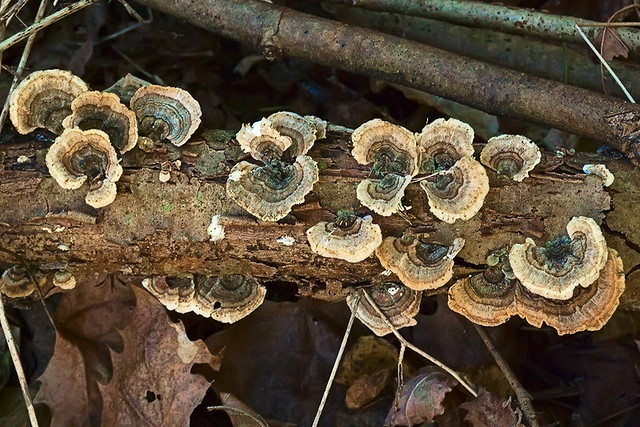
All these photos were hand-held, and suffer from lack of quality; the fact that it was dark makes it even harder to be sure that the photos both have enough of the subject in focus and not blurred due to camera shake. So in most cases, I boosted the camera's sensitivity to light, which causes digital noise; I used noise reduction software which removes some of the detail, particularly in the shadows.
If you think these photos are fine, please know that I have many more that are not fine and which I'm not showing you here.
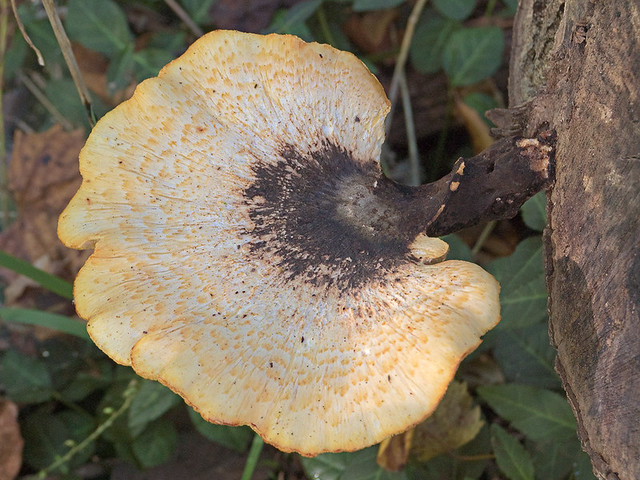
One of the basic tools of the photographer is a tripod; having a steady platform corrects many ills and makes even an inexpensive camera the tool of a fine artist. I think these photos would have been improved with the use of a tripod, for these reasons:
- A steady camera foundation lessens camera shake and allows for precise focus.
- Less light amplification means less digital noise and a cleaner image with more detail.
- Closing down the aperture on the lens means that more of the subject is in focus.
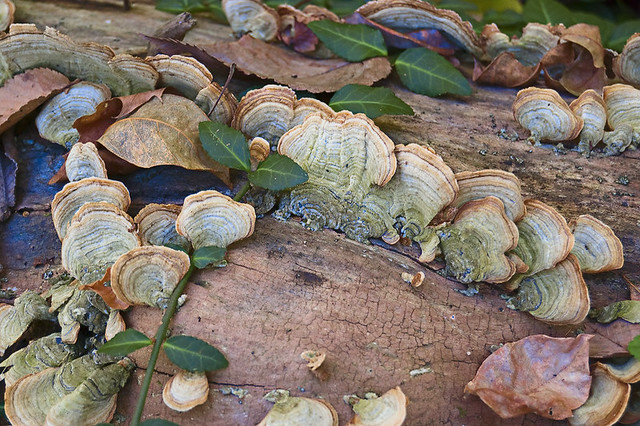
Another useful tool is a Macro (or Micro) lens. These lenses have been optimized specifically to be sharp at close focus. For my camera, there are some Micro lenses that have been made in such huge quantities over the decades that they are quite inexpensive.
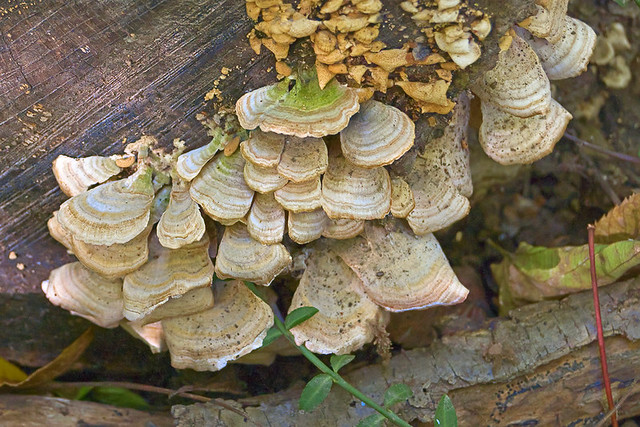
Any photographer who uses his camera's built in flash without good reason may be in a state of sin against art. Flashes are fine, as long as they are detached from the camera by quite a distance — otherwise they throw harsh shadows and generally give poor quality of lighting. Strangely, ring flashes that completely surround the lens also produce quality light, and these are often used in this kind of nature photography.
However, I did use my camera's built in flash on a number of these photos — I wouldn't be able to get a shot otherwise.
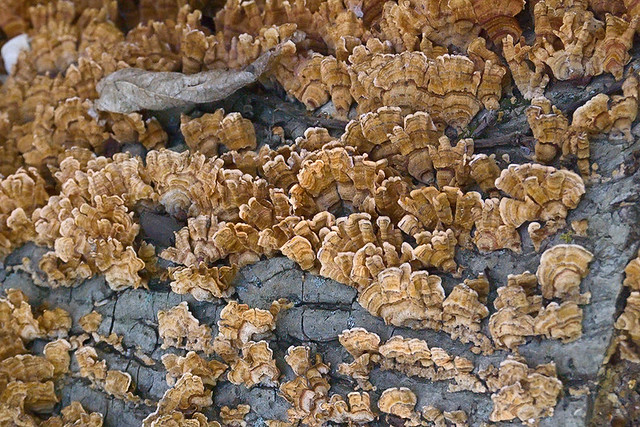
Photography in dim lighting pushes the camera to its practical limits, and so getting exposure right is rather more important. Also, getting the camera white balance correct becomes important because of the green lighting coming from the forest canopy; however I just guessed on most of these shots. On the camera's Auto setting, the colors were usually pretty bad. Where I more serious about this — like I am with church photography — I would have brought a white target for white balance calibration, ensuring that the camera saw the target as actually being white.
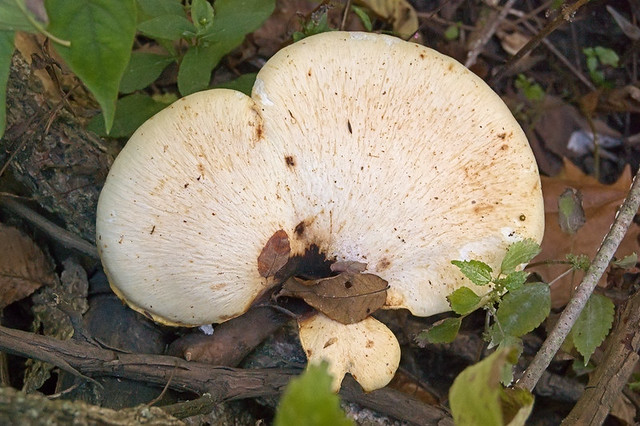
These photos were taken over several months and at various places. If you click the photos, you can both see a larger size as well as the area where I took the photo.

The most prolific mushroom area was also the closest and smallest. Bittersweet Woods and Phantom Forest are two almost-adjacent conservation areas located in the town of Des Peres, in Saint Louis County. Phantom Forest, by the way, comes from land donated by Ray Moore, co-creator of The Phantom comic strip.
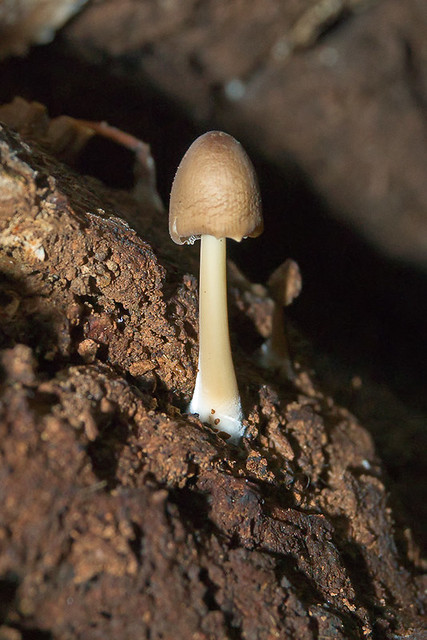
A tiny mushroom.
More recent mushroom photos can be found here.


I loved them! Do you have any pictures of Indian Pipes? They are wonderful, too
ReplyDeleteFYI: you can buy mushroom kits and grow your own!
ReplyDeleteOr drive down to Bonne Terre where and old lead mine is used to grown those mushrooms that you can by in a can
ReplyDelete